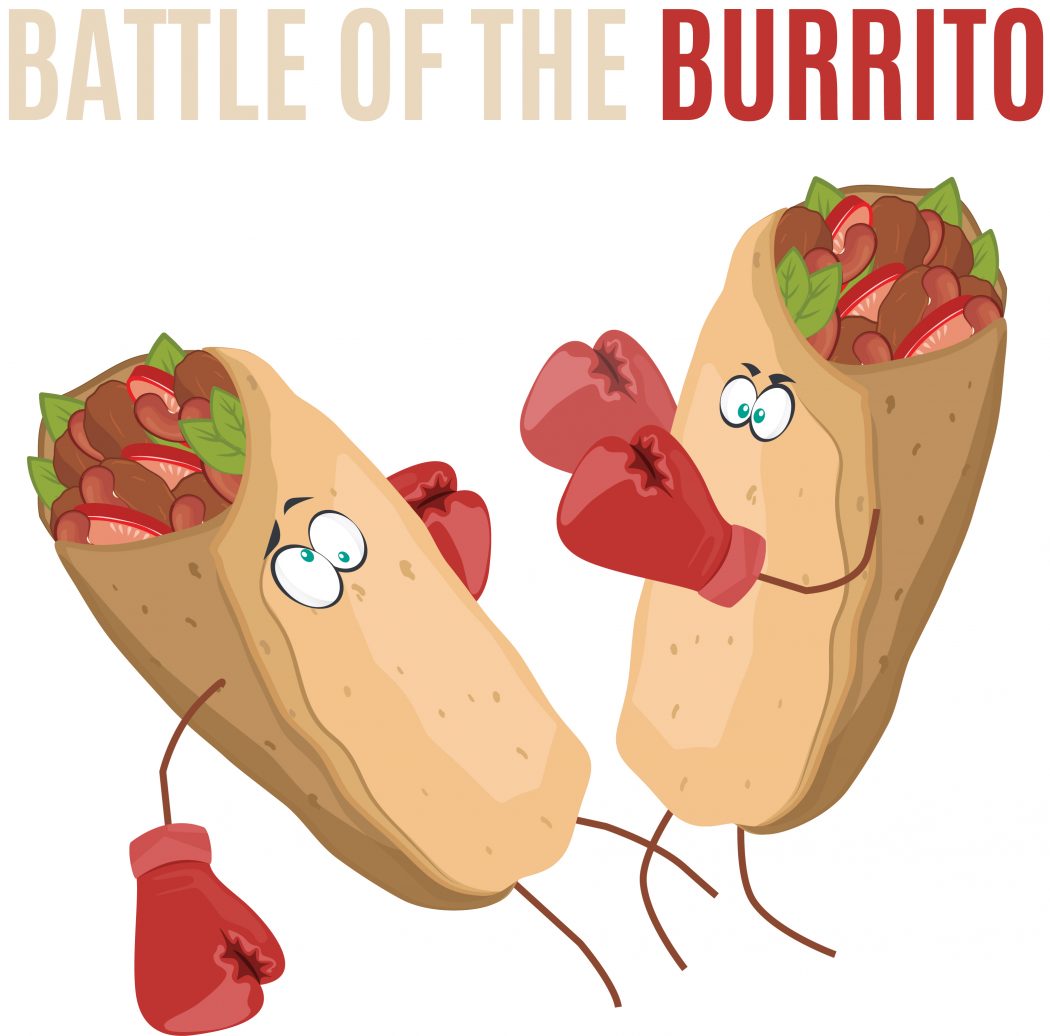Battle of the Burritos
Talk to anyone who has lived in Northern Utah for even a little bit, and they’ll have an opinion.
A heated subject, not to be discussed over Thanksgiving dinner, is sure to spark a debate among Utah State University students and Cache Valley residents alike. Which is superior — Café Rio or Costa Vida?
As readers scan this article, chances are, they’ve already thought up an airtight argument for their Mexican cuisine of choice. For some, their preference is a matter of taste.
USU student, Kaleis Humpherys, a deaf education major, said she prefers Cafe Rio because the sauce is a little more spicy.
Early childhood education freshman, Maecee McDonald, said, “I love Costa Vida. It’s addicting.”
For others, the choice is a matter of aesthetics.
“To be honest,” said freshman Kaedon Buchmiller, regarding Costa Vida, “the little waterfall is what gets my attention.”
Costa Vida flaunts a laid-back, beachy feel, complete with surfing and ocean memorabilia, while Café Rio sports an ambience of a traditional Mexican eatery, complimented with bright colors against a rustic background.
Several students who were interviewed admitted they cannot tell the difference between the two restaurants, but they visit one more than the other simply out of habit.
“I think they taste exactly the same.” said Jessica Blanch, a junior biology major.
Undeclared freshman McKenna Haslam agrees.
“It’s like the same food, but I always go to Costa Vida for some reason,” she said.
Legend has it that Costa Vida and Café Rio were once one restaurant until a sort of feud happened and one split away from the other. At least, that’s the story that has always been told.
Café Rio was founded in 1997 by married couple Steve and Patricia Stanley from St. George, Utah, reported the Daily Herald. Their recipes were inspired by Southern Texas cuisine, including some recipes that had been handed down from their grandmother.
Within six years, the chain had expanded in many states, to as far as Maryland. A few years later, Costa Vida, previously known as Costa Azul, made their debut in 2003. Customers loved the food, and quite literally “ate it up.” Soon, however similarities between Costa Vida and Café Rio became glaringly obvious. According to restaurant review website Fast Food Menu Prices, consumers confused the two chains, even mistakenly calling customer service to comment about the opposite restaurant.
In 2001, Kenny Prestwich, general manager of the Café Rio Fort Union, Utah location, was terminated. Upon termination, he signed a confidentiality agreement, stating that he would not disclose the restaurant’s trade secrets. After its founding in 2003, Prestwich took up employment with competitor, Costa Vida. Allegedly, Prestwich divulged Café Rio’s recipes and methods and began putting them into practice.
Soon, Café Rio took action. They filed a complaint against Costa Vida, claiming that they had copied not only their recipes, but their décor and ambience, right down to the style of their frequent-diner cards. Eventually, the matter was settled outside of court for an undisclosed amount. Café Rio’s corporate office declined to comment. Costa Vida was also contacted, but did not reply.
In short, both restaurants offer similar food with differing ambiences. Students at Utah State may never come to an agreement about which restaurant is better and why, but for now, they can study, sleep and eat burritos.
—


Cafe Rio all the way, they do not skimp you on meat. I personally do not like beans in my burrito so I ask for extra rice inside and outside and they do not charge me extra. Costa does charge extra and skimps you on the meat compared to Cafe Rio.